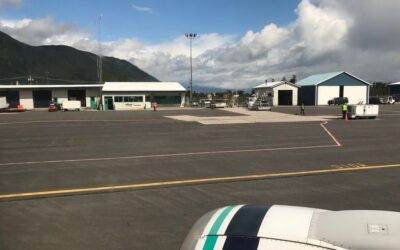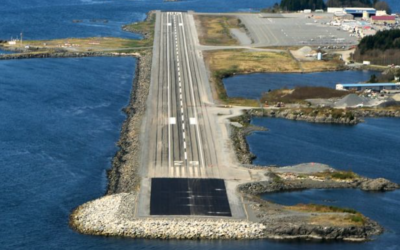Kodiak Benny Benson State Airport (ADQ), situated near Kodiak, Alaska, stands amidst Alaska’s vast and rugged landscape. Named after Benny Benson, the young Alaskan who designed the state’s flag, this airport serves as a crucial gateway for both the local community and the military, underscoring the intertwined nature of civilian and defense interests in the region.
Historical Background
The origins of Kodiak Airport date back to 1941, predating the United States’ entry into World War II, when it was established as a Naval Air Station. This historical foundation laid the groundwork for its dual-use nature, combining military readiness with public aviation services. Over the decades, the airport has evolved, adapting to the changing needs of the community and the strategic imperatives of the U.S. Coast Guard, which operates a significant base there today.
Infrastructure and Facilities
Kodiak Airport boasts a comprehensive infrastructure capable of supporting a wide range of aviation activities. With three asphalt runways (2296 meters, 1646 meters, and 1527 meters), the airport accommodates commercial flights, air taxis, general aviation, and military operations. The presence of the Coast Guard Air Station Kodiak highlights the strategic importance of the facility, serving as a base for both search and rescue missions across the vast expanse of the northern Pacific and as a cornerstone of the United States’ defense posture in the region.
Commercial and Community Role
As a primary commercial service airport, Kodiak Benny Benson State Airport is vital to the local economy. It connects the island with major Alaskan cities and provides essential services such as mail delivery, cargo, and passenger transport. The airport’s role extends beyond mere transportation; it facilitates medical evacuations, supports the local fishing industry—one of Kodiak’s economic pillars—and plays a part in the tourism sector by welcoming visitors eager to explore the natural beauty and wilderness of Alaska.
Challenges and Adaptations
Operating an airport in Alaska comes with a unique set of challenges, from harsh weather conditions to logistical hurdles associated with remote locations. Kodiak Airport has continuously adapted to these challenges, implementing modern technology and practices to ensure safety and efficiency. The management and staff are dedicated to maintaining high standards of operation, reflecting the resilience and ingenuity required to thrive in the Alaskan environment.
Environmental Stewardship and Sustainability
Kodiak Benny Benson State Airport operates with a keen awareness of its environmental responsibilities. Situated in a region of significant natural beauty and ecological importance, the airport and its stakeholders are committed to sustainable operations. This includes measures to minimize the impact on local wildlife and ecosystems, highlighting a balance between human activity and nature preservation.
Future Prospects
Looking to the future, Kodiak Airport is poised for continued evolution. Plans for infrastructure enhancement, service expansion, and environmental initiatives are in place to meet the growing demands of the community and the strategic needs of the country. As aviation technology advances, Kodiak Airport remains committed to adopting innovations that will improve service delivery and operational efficiency, ensuring its role as a pivotal hub in the Alaskan aviation network for years to come.







0 Comments